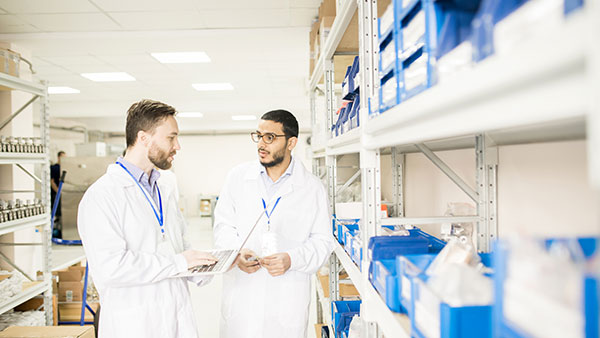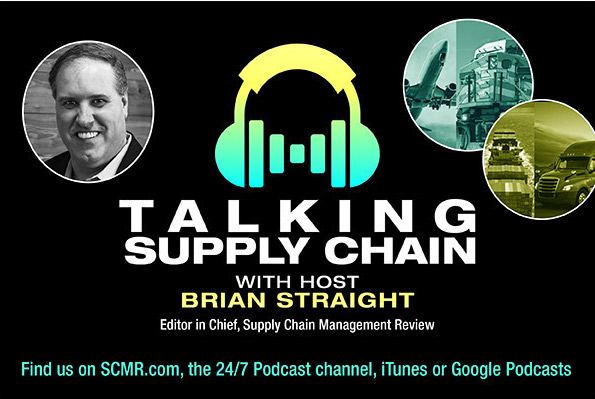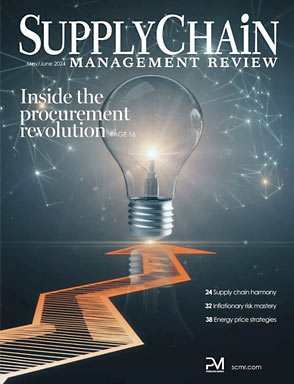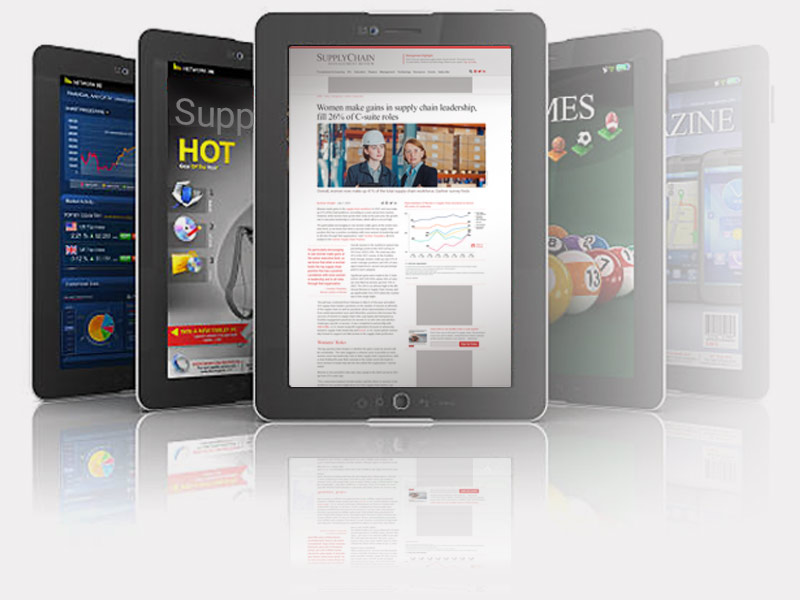The life sciences and healthcare supply chain is experiencing both extraordinary growth and intensifying complexity. From rising investments in pharmaceutical manufacturing to the rapid advancement of artificial intelligence, the sector faces pressures—and opportunities—that demand operational precision and scale. For DHL Supply Chain, which manages more than 100 million square feet across 550 sites in North America, these challenges are defining a new era of strategic logistics.
“Life sciences in healthcare in general is very, very hot,” Jim Saponaro, president, life sciences and healthcare, DHL Supply Chain, told Supply Chain Management Review at the recent Gartner/Xpo Symposium in Orlando. “It’s a space that all of us recognize is really hot and you’ve got the entrance more cell and gene therapy biopharma with GLP becoming so prevalent overnight.”
Scale as strategy
Saponaro emphasized that DHL’s scale is a critical advantage in such a volatile environment. Whether adapting to shifting trade policies or expanding cold chain infrastructure, the company is positioned to respond quickly. “If we need to bring resources from other parts of the world we can do that.”
That scope also extends to real-time problem-solving. “We've had customers that we opened up overnight overflow for them and we were able to find space,” he said. “It's a little bit tougher because almost everything we do is controlled temperature. We’ve had to expand our cold chain as our customers bring on oncology or other products.”
Reshoring and readiness
Post-pandemic, onshoring and domestic pharmaceutical manufacturing have surged. DHL has responded not just with warehouse capacity, but by integrating deeper into customers’ operations.
“We’re taking over the warehouse to manage it. We take over the shuttles and then we’re even doing some in-house plant services… and it really allows manufacturing to focus,” Saponaro explained. “That means they can take some of those raw materials that they have sitting all over and leave them where they should be in the warehouse and get them there just in time.”
DHL’s real estate strategy is a key part of that readiness. “We are one of the largest real estate companies in the world. We acquire land, we build buildings for our customers… Hopefully we can buy more land, rinse and repeat.” Once customer are brought online, though, DHL often transfers that building, but having such a large real estate portfolio allows it to bring facilities to market quicker.
AI and automation’s expanding role
DHL is no stranger to innovation, and artificial intelligence is increasingly central to its strategy. “AI can fit into a lot of places. So anytime you're doing repetitive kinds of activities, analysis of data… you leverage AI technology to help you make decisions, create scenarios and see what kicks out,” Saponaro said.
One advantage DHL enjoys is its size, enabling it to fund extensive experimentation. “We’ve got about 3,000 pilots going. I talked about one … where we brought (automation) into a site where it could do a cycle count of a building in a couple of days… It’s one-tenth of the time it would take people.”
Zero defects and high expectations
In the life sciences space, compliance isn’t optional—it’s mission-critical.
“When you have a practice as big as ours, you have as many clients as we do, we have a huge QA, compliance and regulatory [department],” Saponaro said. “That’s the biggest challenge in life sciences, right? There's a patient at the end of everything we do, which is exciting. The standard is zero defect.”
That mindset, he said, drives a different level of customer partnership. “We do a lot of audits. We self-audit, customers audit… When you do business with us, all that army comes with us.”
From vendor to value partner
Beyond compliance, DHL is increasingly positioning itself as a growth enabler—not just a logistics provider. “Our teams have done a really good job of collaborating,” Saponaro said. “Let’s go with [our customer] to [their] big customers… and let’s sit down and brainstorm about what is the art of the sauce, what’s the win-wins that help them… Hopefully that drives more sales.”
He noted that conversations with customers are moving beyond procurement to the executive level. “I want to talk to the C-suite about what we do. I’m not running to procurement… Most of our clients, we have a lot of clients that still in-source, believe it or not … So we don’t talk to the people that run them. We talk to the people that are responsible for [decions-making].”
Looking ahead
While AI and automation will continue to reshape the warehouse, Saponaro sees DHL’s role expanding across the entire supply chain. “When you’re really successful, you take it outside the four walls,” he said. “At one end is raw materials going into a plant. At the other end is the customer and then [there] is the consumer.”
And in a world where risk and reward are increasingly tied to supply chain reliability, DHL’s scale and integration may become more valuable than ever. “CFOs, COOs and chief supply chain officers are really seeing old supply chains and they don’t want to invest in them,” Saponaro said. “That’s where we can come in—best in class and capital and expertise and a huge portfolio of innovation.”
SC
MR


More Life Sciences
- Uber Freight’s Val Marchevsky to deliver Keynote at NextGen Supply Chain Conference
- A conversation on the life sciences supply chain with DHL’s Jim Saponaro
- Last call for speaker abstracts, award submissions for NextGen Supply Chain Conference
- NextGen Supply Chain Conference heads to Nashville in 2025 with focus on 4 key industries
- Lives Depend on the Success of the Life Sciences Supply Chain
- More Life Sciences
 Explore
Explore
Topics
Procurement & Sourcing News
- C.H. Robinson rolls out AI agent to address LTL classification overhaul
- Danone latest to announce new US investment
- Uber Freight’s Val Marchevsky to deliver Keynote at NextGen Supply Chain Conference
- Unlocking the green grid: Innovations for eco-friendly last mile
- Dealing with supply chain complexities with scenario intelligence
- Securing critical minerals during a global trade war
- More Procurement & Sourcing
Latest Procurement & Sourcing Resources

Subscribe

Supply Chain Management Review delivers the best industry content.

Editors’ Picks




